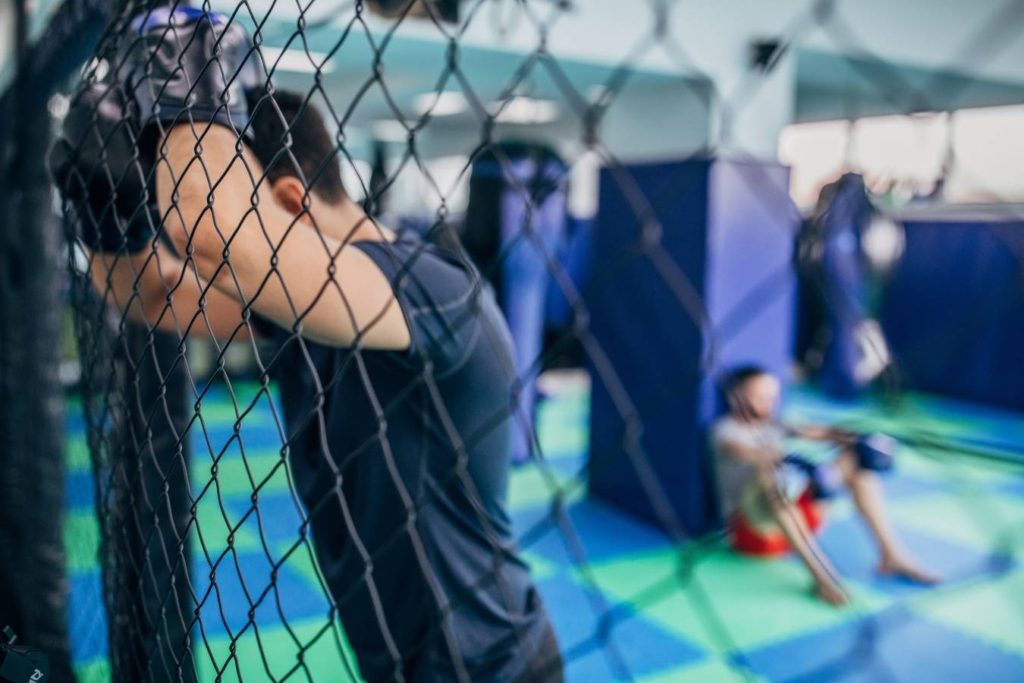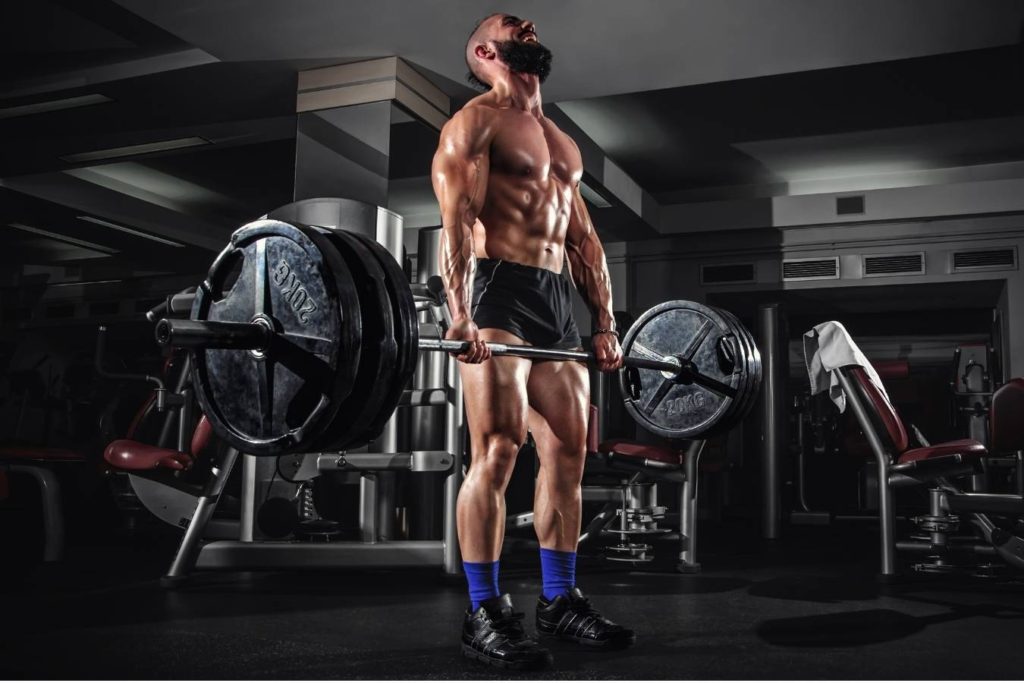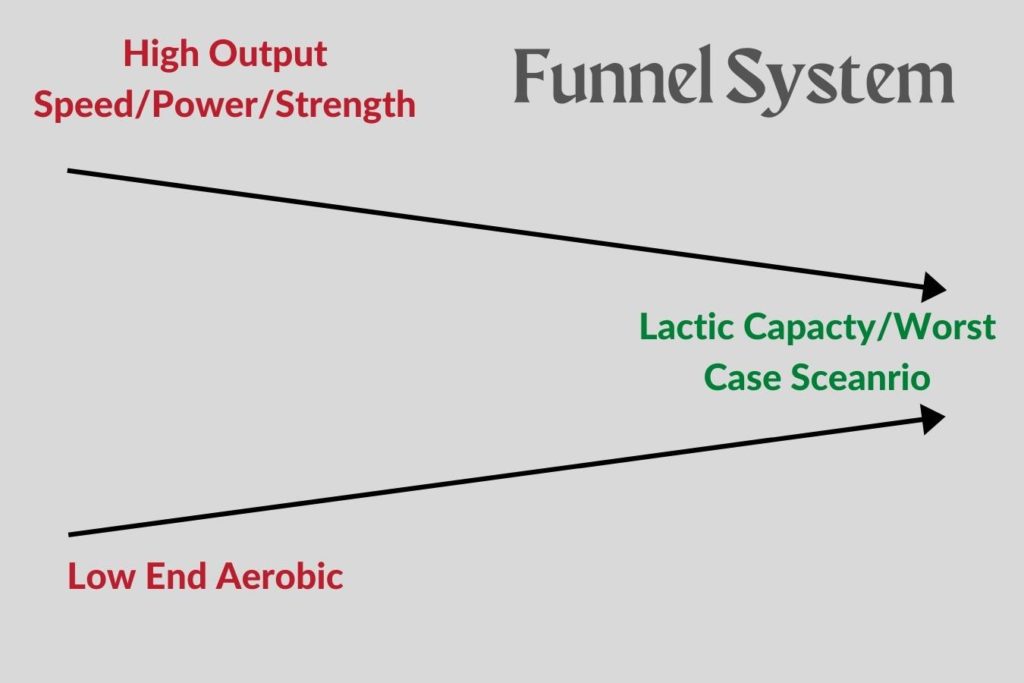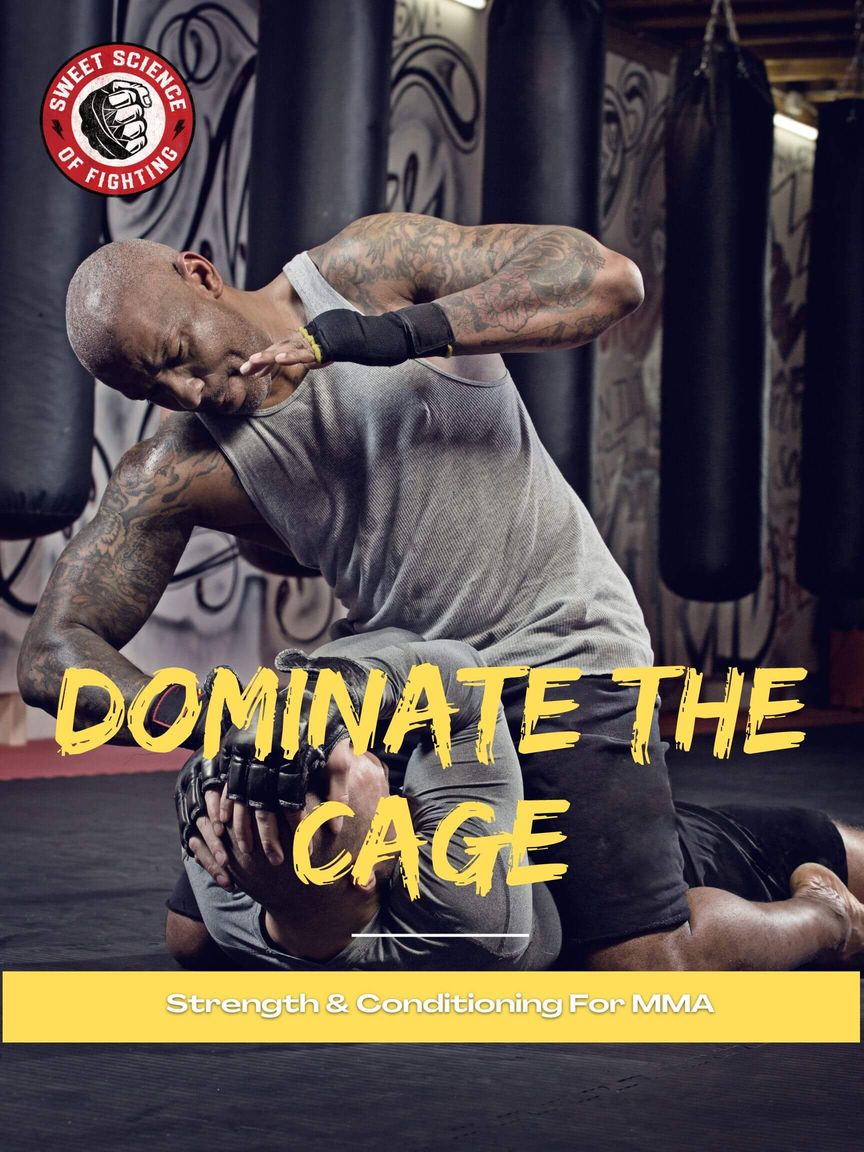CrossFit is still one of the most popular forms of physical activity within a gym. Many people were introduced to weight training through CrossFit classes.
With CrossFit becoming more and more mainstream, it gradually moved its way into MMA training as a form of supplementary strength and conditioning. However, in my opinion, this has caused more harm than good.
CrossFit training gives mixed physiological signals for the body to adapt to meaning the training response is never optimized for MMA. Further, CrossFit training doesn’t target specific qualities needed for MMA performance such as high-velocity strength, maximal outputs, and low-level aerobic work.
Before diving into the reasons why CrossFit training is not good for MMA, we should first define what CrossFit training is.
What Is CrossFit Training
Training for a CrossFit competition and CrossFit training are two entirely different things. When training for a CrossFit competition, most CrossFit athletes will have a planned program that will address the physical needs of the sport.
This means that daily random WODs isn’t the training process.
CrossFit training on the other hand is generally a smorgasbord of WODs (workout of the day) or random exercises put together in a circuit fashion.
This is not always the case. Sometimes there may be a strength-orientated portion before performing a WOD but this is usually working up to a max weight within a certain time limit. Not exactly conducive to developing strength.

How to Dominate Every Fight with Raw, Explosive Power No One Can Match
Discover the underground blueprint that has quietly turned MMA hopefuls into legends, using nothing but sheer, brute force and bulletproof conditioning techniques.
With this in mind, here are 8 reasons why CrossFit is NOT good for MMA.
Reason #1: CrossFit Doesn’t Emphasise The Correct Energy Systems To Prevent Gassing Out

CrossFit WODs are about performing a range of exercises as quickly as possible. In doing so, you essentially red line yourself with maximum effort, heart rates close to maximum, and fatigue so high you may struggle to train again that day.
When performing conditioning for MMA, it’s important to manipulate specific work to rest ratios at specific intensities to target the physiological adaptations that will make you a better conditioned MMA fighter.
This means performing some training at lower intensities for longer duration and some training at higher intensities for short durations.
Redlining with CrossFit WODs every week as a form of conditioning does none of the above. You create a mixed bag of physiological signals for your body to adapt to meaning none are maximized or optimized.
You end up starting the workout mainly using energy from the alactic and aerobic energy systems. As the intensity becomes unsustainable by the aerobic energy system, the anaerobic lactic energy system picks up the slack. Once that energy is used, the intensity of your workout decreases as you have “gassed out” and relying mainly on aerobic processes for the remainder of your workout.
This mixed approach isn’t going to develop the gas tank you need to sustain high levels of power output and intermittent explosive tasks throughout a fight.
Also, the anaerobic lactic energy system has the smallest room to improve compared to the aerobic energy system and is usually maximized in a few weeks of training.
Reason #2: CrossFit Doesn’t Improve High Outputs
You perform box jumps, Olympic Weightlifting, deadlifts, and medicine ball throws during your CrossFit training. Yet, here I am telling you that CrossFit doesn’t improve high force, velocity, and power outputs?
Yep, and there are two major reasons why CrossFit training does not allow adequate rest periods between sets or exercises to be conducive to enhancing maximal outputs.
Secondly, when there is a strength or power portion before performing a WOD, it is always to a maximum lift either that’s a 1RM, 3RM, or whatever within the allotted time scale.
Working up to a max is testing strength, not developing it.
In order to improve maximal outputs, you need full recovery between sets, minimal reps, and maximum effort.
For example, a heavy set of 3 squats with 3+ minutes rest between sets. Or sets of 4 vertical jumps with 2-3+ minutes of rest between sets.
Why are maximal outputs important for MMA? Knockout punches, kicks, and shooting for takedowns require quick bursts of high-intensity effort.
The more force you can produce within the limited time windows, the more powerful you will be in high-intensity exchanges. Increasing your chances of knocking out your opponent of finishing that takedown.
CrossFit training doesn’t allow you to train and develop these maximal outputs as the intensity isn’t high enough.
Reason #3: CrossFit Doesn’t Focus On Low-End Aerobic Work
As mentioned in reason #1, CrossFit training delivers a mixed bag of physiological signals. WODs are also performed at near maximum heart rates which don’t optimize the aerobic pathways.
When you want to emphasize the aerobic energy system, training should be of lower intensity. Heart rates generally sit below 150 BPM in order to facilitate central adaptations to the heart.
The heart can be trained just like any other muscle. But in order to stimulate adaptations to the heart that allows it to pump more blood more efficiently, intensities need to be low.
The aerobic energy system plays a vital role in MMA performance. It influences the ability to recover from high-intensity efforts, whether that is between rounds or between striking and grappling exchanges.
Further, the more aerobically “fit” you are, the greater proportion of the fight can be spent aerobically meaning you are less likely to gas out as the anaerobic lactic system only has so much energy to give.
Reason #4: WOD Style Training Doesn’t Improve Maximal Strength

I touched on strength training in reason #2 regarding maximal outputs. Maximal strength is rarely addressed during CrossFit training and if it is, rest periods are too short.
While you’re likely able to get stronger in this environment to a certain degree, a higher degree of fatigue comes with the shortened rest periods.
Further, working up to a maximum lift isn’t going to develop maximal strength. Getting stronger requires moderate volumes of lifting at moderate to high intensities. An example would be performing 2-5 sets of 3-6 reps at 70-90% of 1RM.
Reason #5: CrossFit Doesn’t Maximise High-Velocity Strength Training
High-velocity strength training encompasses all forms of plyometrics, jumps, throws, Olympic lifts, and other power-based exercises.
Sure, CrossFit uses many of these exercises. But it’s not the exercise that creates the adaptation. It’s how it is performed and the protocol used.
Performing any of these high-velocity strength exercises in a WOD format defeats the purpose when trying to maximize speed and power.
Rather, a WOD drills a middle-intensity pace of submaximal power exercises. You can’t even make the argument CrossFit trains power endurance as the intent of exercises performed in a WOD aren’t performed at maximal or near-maximal efforts.
Rather, exercises are performed in a way to minimize the energy used so you can last through the whole workout.
For example, performing 10 snatches is about how efficient you are at “cycling” the barbell or 30 box jumps is about jumping the minimum height needed to clear the box.
Reason #6: Exercises Are Not Specific To MMA
Not everything that is performed in the gym has to be specific to MMA at all times. Whatever makes the athlete perform better can be considered MMA or sport-specific. For example, if a fighter has a shoulder impingement, they may perform lower trap exercises.
Exercises for the lower traps aren’t specific to MMA. But getting the fighter to have a healthy shoulder so they can perform all the tasks required to excel at MMA would be considered athlete and sport-specific in this context.
When you are going to perform “non-specific” training for MMA, it must be with a goal in mind. Whether that’s in preparation for more intense exercise down the road or targeting a certain physiological adaptation. Not just throwing random exercises together.
When training for MMA, exercises should become more specific to the sport as you get closer to a fight. You can find a good example in “Strength Training For MMA.”
Reason #7: Training Is Not Periodized
As mentioned in the previous point, training should become more specific to MMA as the fight nears. CrossFit training doesn’t take any kind of planning into account.
Usually, it’s a random selection of WODs or exercises put into a grueling circuit. Periodization and CrossFit training could be considered an oxymoron. That doesn’t mean CrossFit athletes don’t plan their training, but that’s an entirely different approach.
MMA training should start more general to prepare the body for more intense training. General doesn’t mean doing any exercise. It means working backward from the endpoint and performing exercises to prepare the muscles and tendons for harder work.
A training plan should also look like a funnel. I like to call it the “Funnel System.” It means, at the start of a training cycle, you emphasize the lowest end aerobic work and the short effort high output work.

MMA training will take care of everything in the middle. As training progresses, the low and the high end starts to converge together as strength and conditioning training starts to get closer to the demands of MMA.
As the funnel gets closer, topping off the high and low-end work with anaerobic lactic work puts the icing on the cake to optimize MMA strength and conditioning.
Reason #8: CrossFit Training Causes High Levels Of Fatigue
When performing training outside of MMA, it is considered supplementary to the sport. That means, whatever you do should be done to better your MMA performance and secondly, should not interfere with MMA training to a great degree.
Performing CrossFit WODs don’t do either. They induce high levels of fatigue that may impact your next MMA training session and often a WOD isn’t going to make you a well-conditioned MMA fighter. At least not in the long term.
What Should You Do Instead?
This article wouldn’t be complete without offering a solution. Strength training for MMA and Conditioning for MMA provides a framework for developing an MMA training plan.
Focus should be placed on developing the aerobic energy system with specific MMA activities such as bag work, shadow boxing, and low-level grappling drills. Non-specific off feet conditioning can also be used if MMA training volume is very high.
High outputs should be developing using various throws, jumps, and power combinations, and takedowns with full recovery.
As the fight nears, rest periods can decrease, and work efforts can be shorter with near maximum intensity to emphasize anaerobic lactic adaptations.
At no point does CrossFit enter this picture.
Biggest, Baddest Gas Tank In Just 8 Weeks
The Underground MMA Conditioning System specifically designed to develop elite level MMA cardio based on your easy to implement test results.



